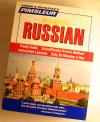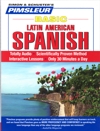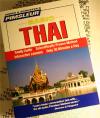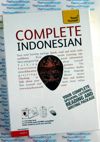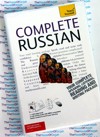Teach Yourself Complete Lithuanian - 2 Audio CDs and Book
Brand New (still shrink wrapped): 2 CDs and Book
Are you looking for a complete course in Lithuanian which takes you effortlessly from beginner to confident speaker? Whether you are starting from scratch, or are just out of practice, Complete Lithuanian will guarantee success!
Now fully updated to make your language learning experience fun and interactive. You can still rely on the benefits of a top language teacher and our years of teaching experience, but now with added learning features within the course and online.
The course is structured in thematic units and the emphasis is placed on communication, so that you effortlessly progress from introducing yourself and dealing with everyday situations, to using the phone and talking about work.
By the end of this course, you will be at Level B2 of the Common European Framework for Languages: Can interact with a degree of fluency and spontaneity that makes regular interaction with native speakers quite possible without strain for either party.
Learn effortlessly with a new easy-to-read page design and interactive features:
NOT GOT MUCH TIME?
One, five and ten-minute introductions to key principles to get you started.
AUTHOR INSIGHTS
Lots of instant help with common problems and quick tips for success, based on the author's many years of experience.
GRAMMAR TIPS
Easy-to-follow building blocks to give you a clear understanding.
USEFUL VOCABULARY
Easy to find and learn, to build a solid foundation for speaking.
DIALOGUES
Read and listen to everyday dialogues to help you speak and understand fast.
PRONUNCIATION
Don't sound like a tourist! Perfect your pronunciation before you go.
TEST YOURSELF
Tests in the book and online to keep track of your progress.
EXTEND YOUR KNOWLEDGE
Extra online articles at: www.teachyourself.com to give you a richer understanding of the culture and history of Lithuania.
TRY THIS
Innovative exercises illustrate what you've learnt and how to use it.
About the Authors:
Meiluté Ramoniené is Head of the Department of Lithuanian Studies, Vilnius University, assoc. professor of Lithuanian Language.
Virginija Stumbrienë is Lecturer in the Department of Lithuanian Studies, Vilnius University.
About the Lithuanian Language
Lithuanian (lietuvių kalba) is the official state language of Lithuania and is recognized as one of the official languages of the European Union. There are about 2.96 million native Lithuanian speakers in Lithuania and about 170,001 abroad. Lithuanian is a Baltic language, closely related to Latvian, although they are not mutually intelligible. It is written in an adapted version of the Roman script. Lithuanian still retains many of the original features of the nominal morphology found in the common ancestors of the Indo-European languages, and has therefore been the focus of much study in the area of Indo-European linguistics. Studies in the field of comparative linguistics have shown it to be the most conservative living Indo-European language. Lithuanian and other Baltic languages passed through Proto-Balto-Slavic stage, during which Baltic languages developed numerous exclusive and non-exclusive lexical, morphological, phonological and accentual isoglosses with Slavic languages, which represent their closest living Indo-European relative. Moreover, with Lithuanian being so archaic in phonology, Slavic words can often be deduced from Lithuanian by regular sound laws.
According to some glottochronological speculations the Eastern Baltic languages split from the Western Baltic ones between 400 AD and 600 AD. The differentiation between Lithuanian and Latvian started after 800 AD; for a long period they could be considered dialects of a single language. At a minimum, transitional dialects existed until the 14th or 15th century, and perhaps as late as the 17th century. Also, the 13th- and 14th-century occupation of the western part of the Daugava basin (closely coinciding with the territory of modern Latvia) by the German Sword Brethren had a significant influence on the languages' independent development. The earliest surviving written Lithuanian text is a translation dating from about 1503–1525 of the Lord's Prayer, the Hail Mary and the Nicene Creed written in the Southern Aukštaitijan dialect. Printed books existed after 1547, but the level of literacy among Lithuanians was low through the 18th century and books were not commonly available. In 1864, following the January Uprising, Mikhail Muravyov, the Russian Governor General of Lithuania, banned the language in education and publishing, and barred use of the Latin alphabet altogether, although books printed in Lithuanian continued to be printed across the border in East Prussia and in the United States. Brought into the country by book smugglers despite the threat of stiff prison sentences, they helped fuel a growing nationalist sentiment that finally led to the lifting of the ban in 1904.
Jonas Jablonskis (1860-1930) made significant contributions to the formation of the standard Lithuanian language. The conventions of written Lithuanian had been evolving during the 19th century, but Jablonskis, in the introduction to his Lietuviškos kalbos gramatika, was the first to formulate and expound the essential principles that were so indispensable to its later development. His proposal for Standard Lithuanian was based on his native Western Aukštaitijan dialect with some features of the eastern Prussian Lithuanians' dialect spoken in Lithuania Minor. These dialects had preserved archaic phonetics mostly intact due to the influence of the neighbouring Old Prussian language, while the other dialects had experienced different phonetic shifts, however the most archaic features are found in the South Aukštaitija dialect such as -tau, -tai usage instead of -chiau, -tum or in instead of į or the endings -on, -un instead of -ą, -ų. Lithuanian has been the official language of Lithuania since 1918. During the Soviet occupation , it was used in official discourse along with Russian which, as the official language of the USSR, took precedence over Lithuanian.Lithuanian is one of two living Baltic languages, along with Latvian. An earlier Old Prussian Baltic language was extinct by the 19th century; the other Western Baltic languages, Curonian and Sudovian, went extinct earlier. The Baltic languages form their own distinct branch of the Indo-European languages.
Lithuanian is spoken mainly in Lithuania. It is also spoken by ethnic Lithuanians living in today's Belarus, Latvia, Poland, and the Kaliningrad Oblast of Russia, as well by sizable emigrant communities in Argentina, Australia, Brazil, Canada, Denmark, Estonia, France, Iceland, Ireland, Norway, Russia proper, Sweden, the United Kingdom, the United States, Uruguay, Spain and France.
2,955,200 people in Lithuania (including 3,460 Tatars), or about 80% of the 1998 population, are native Lithuanian speakers; most Lithuanian inhabitants of other nationalities also speak Lithuanian to some extent. The total worldwide Lithuanian-speaking population is about 4,000,000 (1993 UBS). |
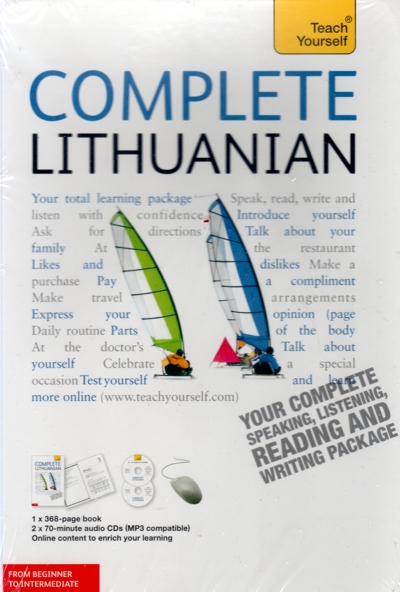


 0 Items (Empty)
0 Items (Empty)

